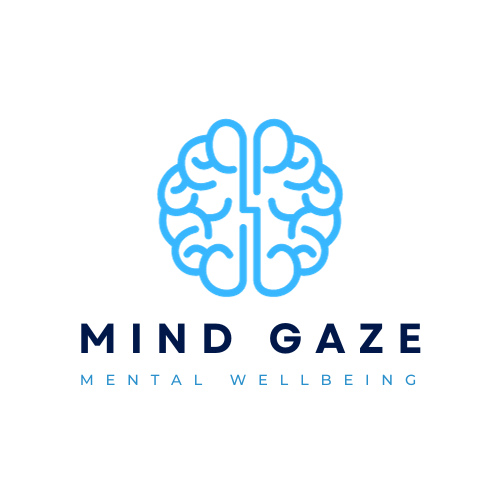Mental resilience is the ability to adapt and cope with adversity, stress, and challenges in life. In today’s fast-paced world, mental resilience has become a crucial skill to have as it helps individuals to thrive in difficult situations. It allows people to persevere through setbacks, overcome obstacles, and bounce back from failures.
Building mental resilience is a lifelong process that involves developing certain key concepts and using them in real-life situations. In this blog post, we will explore the key concepts of building mental resilience and provide examples to help you understand how to apply them in your daily life.
Key Concepts of Building Mental Resilience
1. Positive Thinking
Positive thinking is an essential element in building mental resilience. It involves maintaining a hopeful outlook and focusing on the good aspects of situations, even in the face of adversity. Positive thinkers are characterized by an ability to view failures and setbacks as temporary and isolated incidents, rather than a pattern of defeat. This mindset can help to mitigate feelings of helplessness and prevent anxiety.
2. Using Affirmations
Affirmations are positive statements that can help you to overcome negative thoughts and self-doubt. They serve as a powerful tool for building mental resilience as they can influence our subconscious mind and promote a positive attitude. When you repeatedly tell yourself that you can handle a situation and are capable of overcoming obstacles, you are more likely to believe it and act accordingly. For example, instead of thinking “I am going to fail”, you might use the affirmation “I am capable and I can handle this”. Over time, these positive affirmations can help to alleviate anxiety and build mental resilience.
Consider the case of Sarah, a young professional who often felt anxious about public speaking. To overcome her anxiety, Sarah started using positive affirmations. She would tell herself “I am a confident speaker” and “I can communicate my ideas clearly”. Over time, these affirmations helped Sarah to overcome her fear of public speaking. She started to believe in her abilities, and this belief translated into her actions. Now, Sarah is a confident speaker who is able to effectively communicate her ideas in any situation. Her story is a compelling example of how positive thinking and affirmations can help to build mental resilience and overcome anxiety.
3. Understanding Epictetus’ Dichotomy of Control
The ancient Greek philosopher, Epictetus, propounded a key principle known as the Dichotomy of Control. This concept differentiates between what is within our control (our own actions, thoughts, and responses) and what is not within our control (external circumstances or events). The Dichotomy of Control can play a crucial role in building mental resilience by reducing anxiety and stress.
Epictetus emphasized focusing on areas within our control rather than expending energy on uncontrollable circumstances. This approach encourages acceptance of things as they are, thereby reducing anxiety and stress caused by trying to control the uncontrollable. For instance, if you worry about the weather ruining your outdoor event, you’re fretting over something you can’t control, which only serves to increase your stress levels.
In contrast, focusing on elements within your control, like preparing for potential weather disruptions, can positively impact your mental resilience. By accepting that certain aspects of life will remain beyond your control, you can devote your energy towards personal growth and development, fostering a resilient mindset.
Consider John, a project manager who often found himself stressed about project deadlines due to factors beyond his control, such as client delays or team availability. Upon learning about the Dichotomy of Control, John began focusing on what he could control—his own time management, communication with the team, and contingency planning. This shift in perspective allowed John to reduce his stress, take proactive steps, and build resilience against project uncertainties. The Dichotomy of Control, therefore, served as a powerful tool in John’s journey towards mental resilience.
4.Breathing Techniques
Breathing techniques, often overlooked in their simplicity, are incredibly potent tools in overcoming anxiety and building mental resilience. The process of focusing our attention on our breath, controlling its rhythm and depth, can have profound effects on our mental state, making breathing exercises an integral part of many mindfulness and meditation practices.
Deep, controlled breathing can slow the heart rate and lower blood pressure, eliciting a state of calm and relaxation that counteracts the physiological symptoms of anxiety. Practicing these techniques regularly can help individuals become more attuned to their bodies and their responses to stress, fostering a sense of control and resilience in the face of anxiety-inducing situations.
Let’s take the example of Sarah, a competitive athlete who often struggled with performance anxiety. She found that her anxiety would peak right before a big game, impacting her concentration and performance. After learning about the power of breathing techniques, Sarah began incorporating them into her pre-game routine. She would spend a few quiet moments focusing on deep, controlled breaths, effectively lowering her heart rate and calming her nerves. Over time, Sarah was able to manage her performance anxiety better and found herself becoming more resilient to the pressures of her sport.
Breathing exercises, such as diaphragmatic breathing, box breathing, or the 4-7-8 technique, offer concrete, accessible means for managing anxiety. Diaphragmatic breathing – also known as “belly breathing” – involves inhaling deeply into the diaphragm rather than shallowly into the chest, promoting better oxygen flow and relaxation. Box breathing, used by Navy SEALs to remain calm in high-stress situations, involves inhaling, holding the breath, exhaling, and holding the breath again, all for equal counts of four. The 4-7-8 technique, a method championed by Dr. Andrew Weil, involves inhaling for 4 seconds, holding the breath for 7 seconds, and exhaling for 8 seconds.
Each of these techniques can be practiced virtually anywhere, providing a practical tool for managing stress, reducing anxiety, and bolstering mental resilience. By incorporating these techniques into a regular routine, individuals can cultivate a mentally tough mindset capable of weathering life’s storms.
Conclusion
In conclusion, building mental resilience is an ongoing process with numerous strategies available. Every individual is different and might find different techniques more effective. Key points to remember from the above discussion include:
- Performance anxiety is a common struggle for many individuals, irrespective of their field of work or study. Effective management techniques can improve performance and overall mental resilience.
- Breathing exercises such as diaphragmatic breathing, box breathing, and the 4-7-8 technique are practical tools for managing stress and reducing anxiety. These techniques promote better oxygen flow, relaxation, and mental calmness.
- Regular practice of these breathing techniques can help cultivate a mentally tough mindset, capable of weathering life’s storms. They are easy to implement and can be practiced virtually anywhere.
- Real-life examples, like the case of Sarah, demonstrate that incorporating these techniques into a routine can lead to improved performance and increased resilience under pressure.

